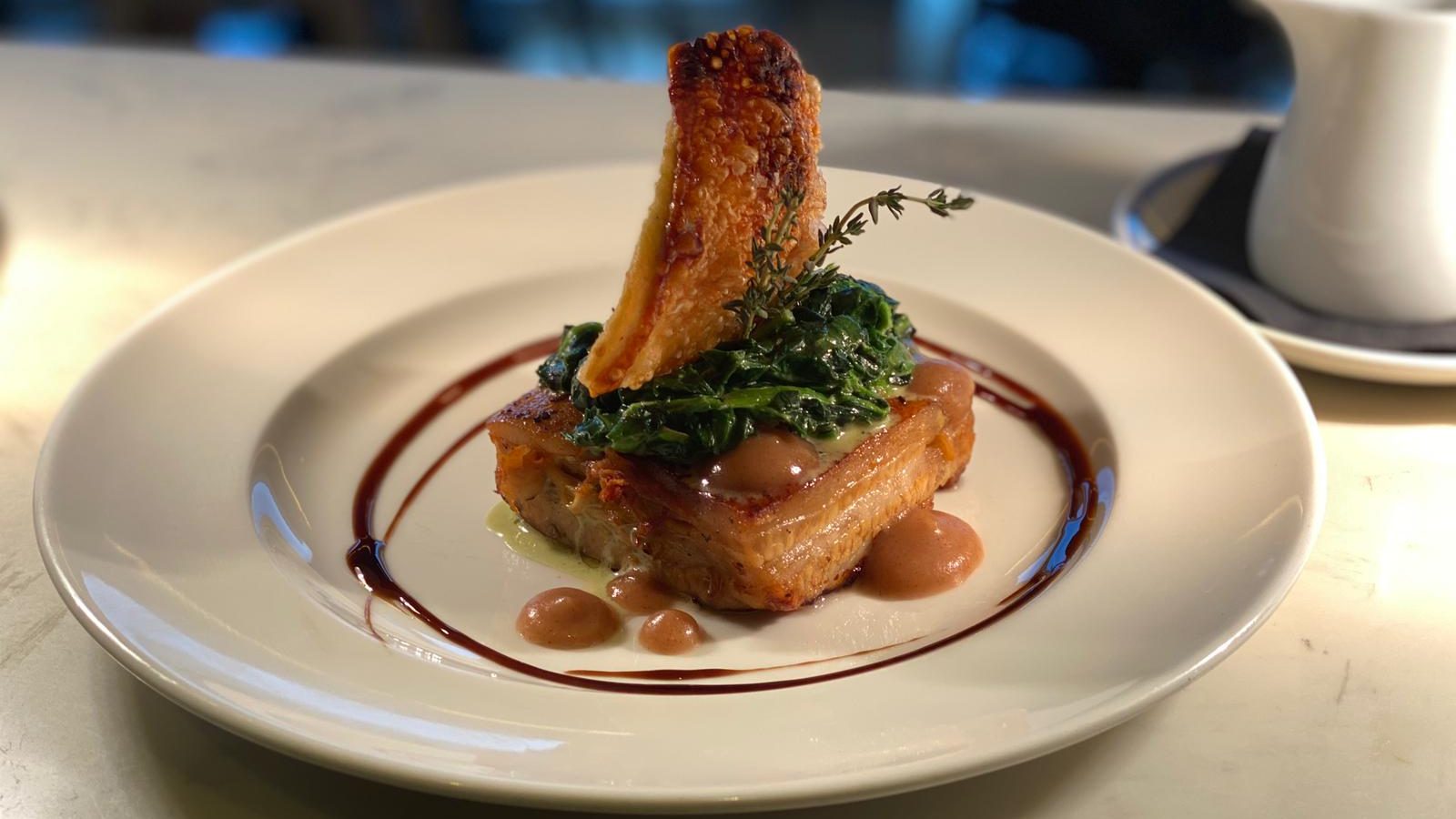Some weeks ago, an impromptu visit to Cambridge, twinned with a considerable lack of organisation, togetherness and any hint of an ability to plan, resulted in dinner at an Ivy Brasserie. One of the Soho icon’s numerous, plaintive offshoots in a brand propagation programme that has been expansive to the point of virality.
Had I been less useless, a treat would have been in store as Cambridge – unlike Oxford, still lacking for the most part – offers much dining promise.
Vanderlyle is a charming, veggie-focused restaurant from the former MasterChef: The Professionals winner Alex Rushmer; other recommendations came my way in the form of Noodles Plus, Fin Boys, Trad House, Liutaio Cafe – a sizeable Chinese population ensures decent dim sum isn’t too difficult to find, I’m told – MJP Restaurant, Restaurant 22, Market House, Little Petra, Bedouin… the list goes on.
But on the Friday evening I was there, everything was already booked up. This was pleasing when considering the state of the catering business, but a challenge for me. Especially after drinks in an empty student basement bar with friendly bartenders who made exceedingly strong mojitos.
And so off I went to The Ivy Brasserie, with a 9pm table going spare; a charmless place that provided passable food. My spicy tuna maki was decent, I’m almost sorry to report, and nothing proved offensive at all besides a bubble gum-tasting disaster of a pudding. Service was excellent in the nouveau Mayfair surroundings installed in a city of cobblestones and history. Take all that how you will.
Its location also proved to be forgiving: five minutes’ walk from my hotel, Varsity Cambridge. It’s a boutique sort of place and one I’d suggest to anyone. Communal spaces are simple, but my room was not, with an entire windowed wall offering views over Cambridge’s Ancaster stone colleges, chapels and churches. Oh, and it has a brasserie, called Six, which I failed to patronise on account of it also being full to the rafters. I can only report that the breakfast was good.
Had I gone, I probably would have had the crispy pork belly. Here’s the recipe, from head chef Bart Swiacki.
Crispy Pork Belly
Serves 2-4
Ingredients
For the pork:
1kg cut of pork belly
2 carrots
1 white onion, peeled
6 garlic cloves
1 sprig of parsley
2 sprigs of rosemary
70-100ml double cream
2 sprigs of fresh thyme
1 bay leaf
8 black peppercorns
Sea salt
For the spice mix:
10g paprika
10g smoked paprika
5g fennel seeds
10g rock salt
5g black pepper
10g dried oregano
5g dried basil
30g brown sugar
2 star anise
For the spinach:
500g baby spinach
Pinch of nutmeg
1 garlic clove, thinly chopped
For the apple sauce:
500g Granny Smith apples
30g butter
50ml quality cider (we use Aspall)
Pinch of ground cinnamon
2 tsp of soft brown sugar
For the gravy:
Oil
Flour
500ml water
Method
Pork belly:
Start by pre-heating oven to 180 degrees. Combine your spice mix in a bowl and set aside.
Remove the skin and ribs from your pork belly and set aside to use later. After the skin and ribs have been removed, rub the pork belly all over with the spice mix.
Chop the top off your carrots, wash and place in a deep baking tray with the peeled white onion, sprig of parsley and garlic cloves. Add the pork belly into the baking tray and fill it with water until the meat is about halfway covered. Add the rosemary and thyme to the tray before covering with tin foil, ensuring there are no gaps so the juices don’t evaporate.
Place the baking tray in the oven and cook for 6 hours at 160 degrees (alternatively, you can cook for 2.5 hours at 180 degrees)
Pork skin:
Put a pan of water on to boil before adding the pork skin you set aside earlier as well as the bay leaf, black peppercorns and salt – this will help to create the lovely crisp on the crackling later. Once skin is soft, drain the water and place the stretched skin on to a paper towel to dry off the excess.
Sprinkle the skin generously with sea salt and let it rest until cold. Once fully cold, cut into strips and cook in the oven at 210 degrees for 20 minutes.
For the spinach:
Ensure spinach is washed before using. Add the butter to a frying pan and let it melt slightly before adding a pinch of nutmeg and thinly chopped garlic.
Add the spinach to the pan and cook until all water has dissolved. Add 70-100ml of double cream (this can be done by eye) and cook until reduced.
For the apple sauce:
Peel your apples before removing the core and cutting into wedges. Fry the apple wedges and butter in a pan for 4 minutes. Add the cider and reduce.
Add a pinch of ground cinnamon and the brown sugar before stirring well. Once stirred, blend the mixture to create a smooth puree consistency. Finish by adding a pinch of salt to help the apple flavour come alive.
For the gravy:
Coat the ribs in flour to ensure gravy will be thick once ready.
Fry the pork ribs you set aside earlier in a pan with some oil. While your pork ribs are frying, remove the pork belly from the oven (if cooked) and set the meat aside.
Once the pork ribs have a nice colour, take the veg and remaining juices from the pork belly tray and add into the frying pan along with the pork ribs. Add 500ml of water to pan and simmer for around an hour.
Remove the ribs and then blend the mixture to get your delicious gravy.




